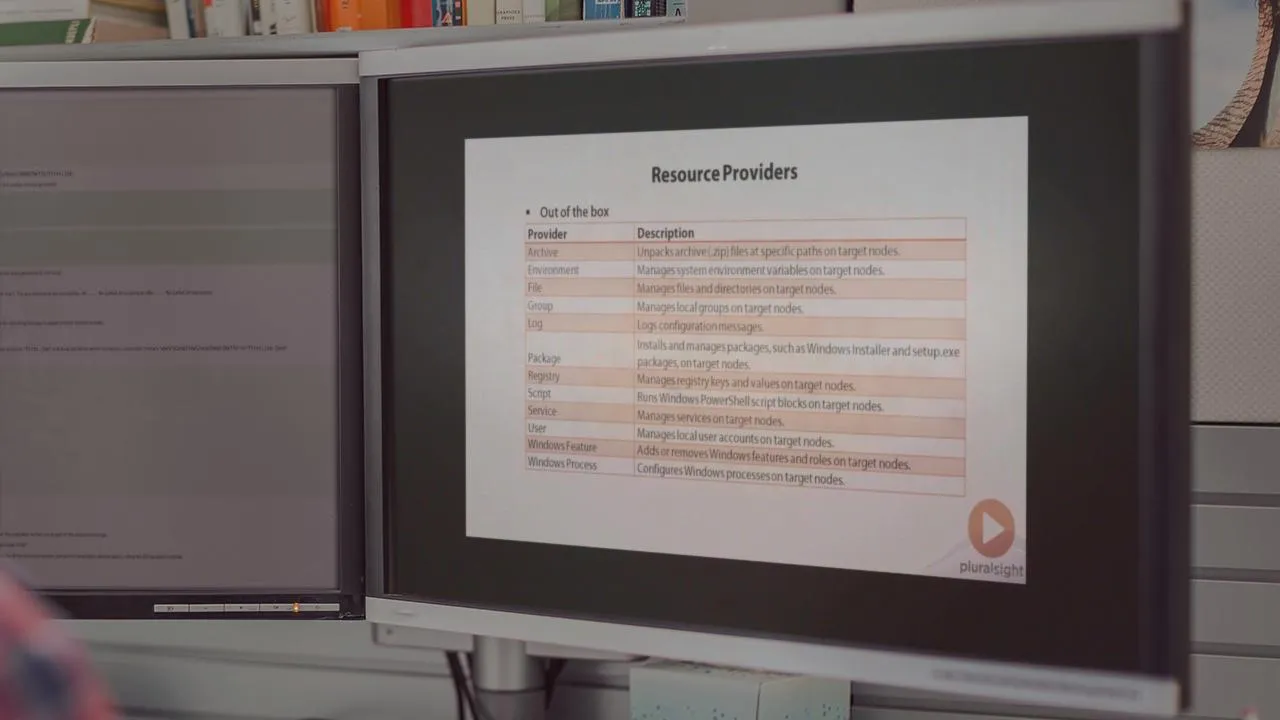
Windows PowerShell Desired State Configuration Fundamentals 
This course provides an overview of Windows PowerShell Desired State Configuration, a powerful tool for automating the configuration of Windows systems. It is designed to give an introduction to using Desired State Configuration with Windows PowerShell. ▼
ADVERTISEMENT
Course Feature
![]() Cost:
Cost:
Free Trial
![]() Provider:
Provider:
Pluralsight
![]() Certificate:
Certificate:
No Information
![]() Language:
Language:
English
![]() Start Date:
Start Date:
Self Paced
Course Overview
❗The content presented here is sourced directly from Pluralsight platform. For comprehensive course details, including enrollment information, simply click on the 'Go to class' link on our website.
Updated in [March 06th, 2023]
This course, Windows PowerShell Desired State Configuration Fundamentals, is designed to provide an introduction to Desired State Configuration (DSC). It is assumed that the viewer has some previous experience in Windows PowerShell, including writing scripts in the PowerShell ISE, and is familiar with installing and configuring Windows servers and operating systems.
The course will cover topics such as creating and deploying DSC configurations, understanding the DSC architecture, and using DSC to manage Windows servers. It will also provide an overview of the different types of DSC resources and how to use them to create and deploy configurations. Additionally, the course will discuss best practices for using DSC and how to troubleshoot DSC configurations.
By the end of the course, viewers will have a better understanding of DSC and how to use it to manage Windows servers. They will also have the skills and knowledge necessary to create and deploy DSC configurations.
[Applications]
The application of this course can be seen in the ability to create and deploy server configurations with Desired State Configuration (DSC). This course provides the fundamentals of DSC, allowing the user to leverage their PowerShell skills to create and deploy configurations. Additionally, the user can use the knowledge gained from this course to automate the installation and configuration of Windows servers and operating systems.
[Career Paths]
1. Windows PowerShell Automation Engineer: Windows PowerShell Automation Engineers are responsible for developing and deploying automated solutions using Windows PowerShell. They must be able to write scripts and understand the fundamentals of Desired State Configuration (DSC). As automation becomes more prevalent in the IT industry, the demand for Windows PowerShell Automation Engineers is expected to increase.
2. Windows PowerShell System Administrator: Windows PowerShell System Administrators are responsible for managing and maintaining Windows servers and operating systems. They must be able to write scripts and understand the fundamentals of Desired State Configuration (DSC). As organizations move towards automation, the demand for Windows PowerShell System Administrators is expected to increase.
3. Windows PowerShell Developer: Windows PowerShell Developers are responsible for developing applications and solutions using Windows PowerShell. They must be able to write scripts and understand the fundamentals of Desired State Configuration (DSC). As organizations move towards automation, the demand for Windows PowerShell Developers is expected to increase.
4. Windows PowerShell Consultant: Windows PowerShell Consultants are responsible for providing advice and guidance to organizations on how to best use Windows PowerShell. They must be able to write scripts and understand the fundamentals of Desired State Configuration (DSC). As organizations move towards automation, the demand for Windows PowerShell Consultants is expected to increase.
[Education Paths]
1. Bachelor of Science in Computer Science: This degree path provides students with a comprehensive understanding of computer science fundamentals, including programming, software engineering, and computer architecture. Students will also learn about the latest technologies and trends in the field, such as artificial intelligence, machine learning, and cloud computing.
2. Bachelor of Science in Information Technology: This degree path focuses on the application of technology to solve business problems. Students will learn about the design, development, and implementation of information systems, as well as the management of networks and databases. They will also gain an understanding of the security and ethical implications of technology.
3. Master of Science in Computer Science: This degree path provides students with an advanced understanding of computer science principles and technologies. Students will learn about the design and development of software systems, as well as the principles of computer architecture and operating systems. They will also gain an understanding of the latest trends in the field, such as artificial intelligence, machine learning, and cloud computing.
4. Master of Science in Information Technology: This degree path focuses on the application of technology to solve business problems. Students will learn about the design, development, and implementation of information systems, as well as the management of networks and databases. They will also gain an understanding of the security and ethical implications of technology, as well as the latest trends in the field, such as cloud computing and big data.
Course Provider

Provider Pluralsight's Stats at AZClass
Pluralsight ranked 16th on the Best Medium Workplaces List.
Pluralsight ranked 20th on the Forbes Cloud 100 list of the top 100 private cloud companies in the world.
Pluralsight Ranked on the Best Workplaces for Women List for the second consecutive year.
AZ Class hope that this free trial Pluralsight course can help your Powershell skills no matter in career or in further education. Even if you are only slightly interested, you can take Windows PowerShell Desired State Configuration Fundamentals course with confidence!
Discussion and Reviews
0.0 (Based on 0 reviews)
Explore Similar Online Courses

Religious Transformation in Early China: the Period of Division

Firebase Functions

Python for Informatics: Exploring Information

Social Network Analysis

Introduction to Systematic Review and Meta-Analysis

The Analytics Edge

DCO042 - Python For Informatics

Causal Diagrams: Draw Your Assumptions Before Your Conclusions

Whole genome sequencing of bacterial genomes - tools and applications

Spearphishing Attachment and PowerShell

Intro to PowerShell Scripting


Start your review of Windows PowerShell Desired State Configuration Fundamentals